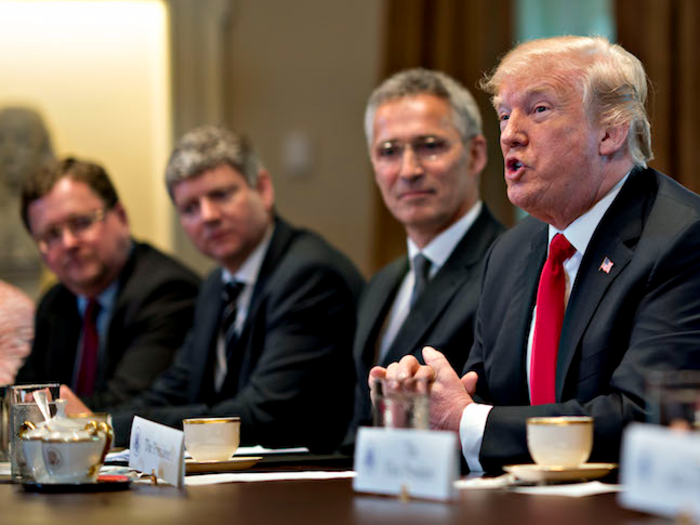
"I haven't been able to stop thinking about it," HuffPost reporter Ashley Feinberg said in a tweet.

Keratin filaments in our cells are essential for growing hair, skin, and nails.

This kind of growth is sometimes referred to as a senile wart.
"Those are kind of random," Suozzi said. "You're partly genetically predisposed to them, and they're also worse in patients that have more sun damage."
But if it's not a seborrheic barnacle, the spot could be something more dangerous.

"The risk of any one of them becoming a skin cancer is pretty low," Suozzi said. "Somewhere from one in 100 to one in 1,000."

One of the most common, effective ways to treat keratosis spots is to freeze them.

That's "inflammation from, likely, liquid nitrogen treatment," Suozzi said. "That would be my educated guess."
She said the key clue is the little circle of white and red around the affected area on his cheek, which can be seen in this photo taken on Monday.
But the freezing treatment for keratosis spots doesn't always work, and can leave that patch of skin lightened.
 A couple accidentally shipped their cat in an Amazon return package. It arrived safely 6 days later, hundreds of miles away.
A couple accidentally shipped their cat in an Amazon return package. It arrived safely 6 days later, hundreds of miles away. A centenarian who starts her day with gentle exercise and loves walks shares 5 longevity tips, including staying single
A centenarian who starts her day with gentle exercise and loves walks shares 5 longevity tips, including staying single  2 states where home prices are falling because there are too many houses and not enough buyers
2 states where home prices are falling because there are too many houses and not enough buyers "To sit and talk in the box...!" Kohli's message to critics as RCB wrecks GT in IPL Match 45
"To sit and talk in the box...!" Kohli's message to critics as RCB wrecks GT in IPL Match 45
 7 Nutritious and flavourful tiffin ideas to pack for school
7 Nutritious and flavourful tiffin ideas to pack for school
 India's e-commerce market set to skyrocket as the country's digital economy surges to USD 1 Trillion by 2030
India's e-commerce market set to skyrocket as the country's digital economy surges to USD 1 Trillion by 2030

Copyright © 2024. Times Internet Limited. All rights reserved.For reprint rights. Times Syndication Service.